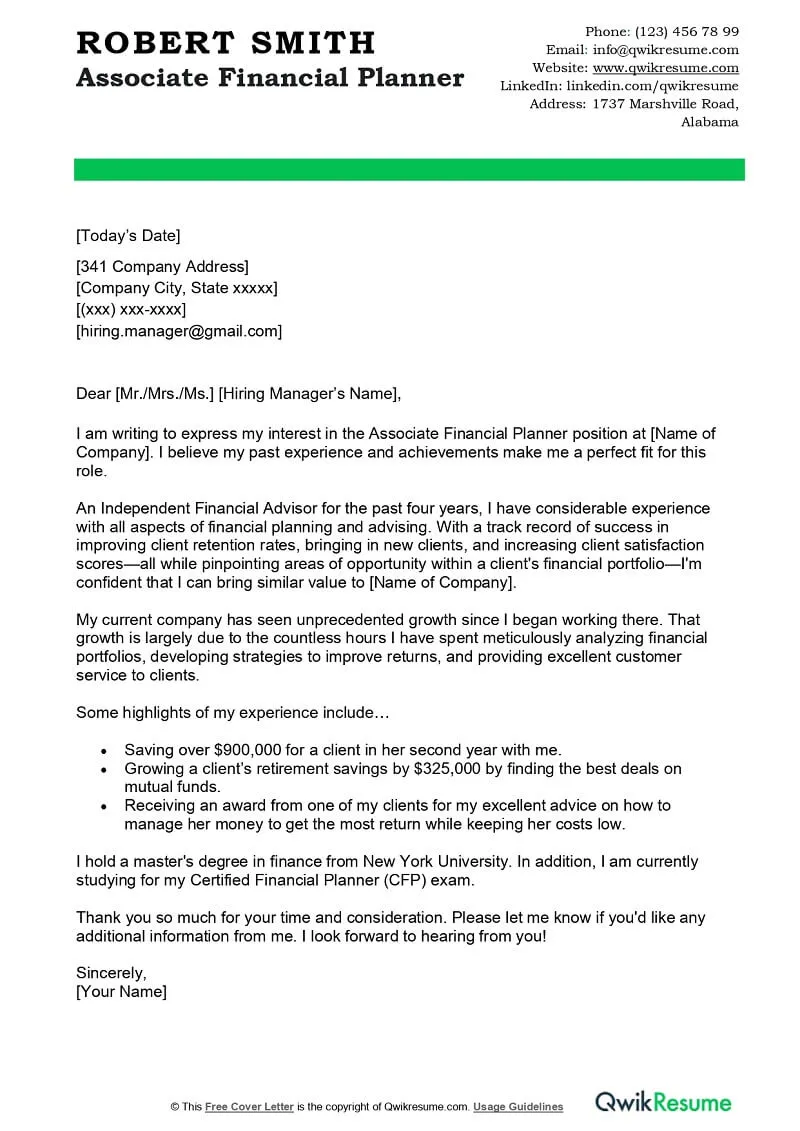Why You Need a Financial Advisor Cover Letter
A well-crafted financial advisor cover letter is your first opportunity to make a strong impression on a potential employer. It’s more than just a formality; it’s a crucial tool that can set you apart from other applicants and increase your chances of landing an interview. In a competitive field like financial advising, where candidates often possess similar qualifications, your cover letter provides a space to showcase your personality, enthusiasm, and unique value proposition. It’s a chance to tell your story, highlighting not just your experience and skills but also your career goals and what motivates you to succeed in the financial industry. A compelling cover letter demonstrates your commitment and attention to detail, qualities highly valued in financial professionals.
Understanding the Purpose of a Cover Letter
The primary purpose of a financial advisor cover letter is to introduce yourself and express your interest in a specific position or company. It allows you to expand on the information in your resume, providing context and demonstrating how your skills and experience align with the job requirements. The cover letter should clearly articulate why you are a good fit for the role and what you can bring to the organization. It should also show that you have researched the company and understand its values and mission. Think of the cover letter as a personalized introduction that sets the stage for a deeper conversation during an interview. It’s a marketing tool to sell yourself.
Highlighting Your Skills and Experience
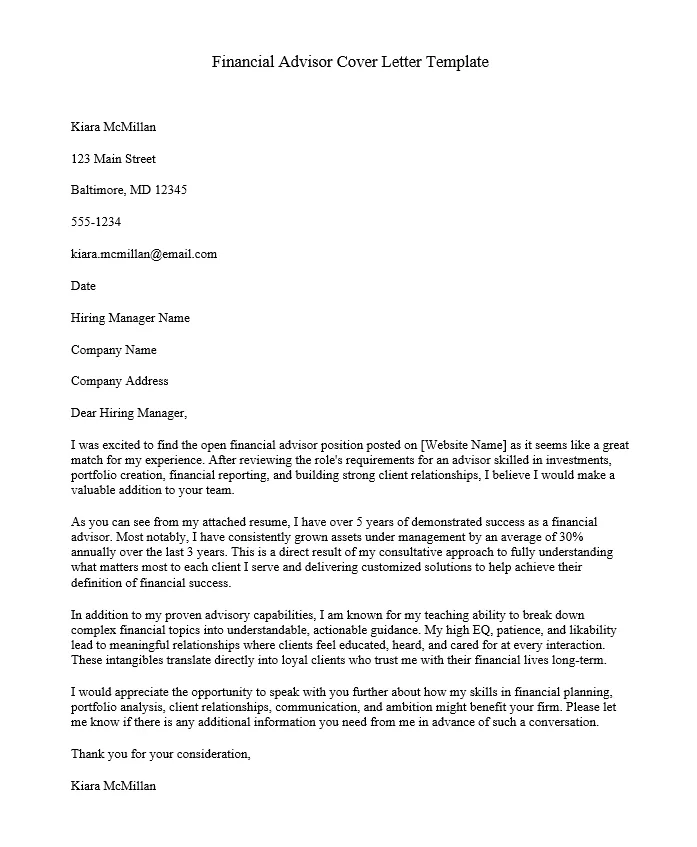
Your cover letter should effectively highlight your relevant skills and experience. Focus on the accomplishments that demonstrate your ability to succeed as a financial advisor. This includes showcasing your expertise in financial planning, investment management, client relationship management, and regulatory compliance. Consider using specific examples to illustrate your skills. For instance, if you have experience in developing financial plans, describe a situation where you successfully guided a client to achieve their financial goals. If you’re proficient in investment analysis, provide examples of how your recommendations have improved client portfolios. Quantify your achievements whenever possible, using numbers and metrics to show the impact of your work. For example, you could mention the percentage increase in assets under management or the number of new clients you acquired.
Key Components of a Financial Advisor Cover Letter
Header and Contact Information
Start your cover letter with a professional header that includes your full name, address, phone number, and email address. Ensure that your contact information is accurate and up-to-date. Below your contact information, include the date and the hiring manager’s name, title, and company address. If you are unsure of the hiring manager’s name, research the company’s website or LinkedIn to find the appropriate contact person. Addressing your letter to a specific individual shows that you have taken the time to personalize your application, which can make a positive impression. The header should be well-formatted and easy to read, setting a professional tone from the start. It is important to make sure that you use a professional email address.
Greeting and Introduction
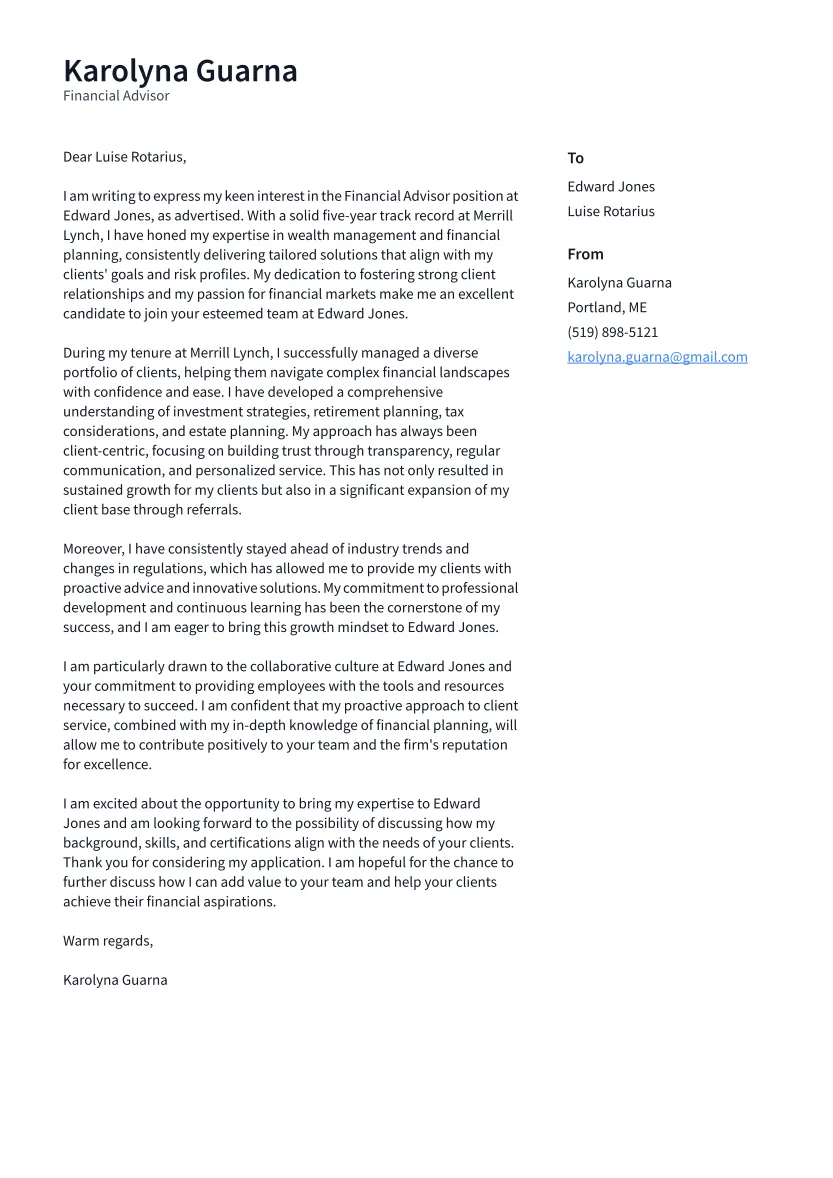
Begin your letter with a professional greeting, such as “Dear Mr./Ms. [Last Name].” Avoid generic greetings like “To Whom It May Concern.” In the opening paragraph, clearly state the position you are applying for and how you learned about the opportunity. Briefly introduce yourself and express your enthusiasm for the role and the company. Make sure to mention what attracted you to the company. This could be the company’s reputation, its values, or its commitment to client service. Your introduction should immediately grab the reader’s attention and make them want to continue reading. The goal is to create a positive first impression and establish a connection with the hiring manager.
Body Paragraphs
The body paragraphs are the core of your cover letter, where you provide detailed information about your qualifications and experience. Use these paragraphs to highlight your relevant skills, accomplishments, and experiences that align with the job requirements. Focus on what you have to offer the company. Explain how your skills and experience make you a good fit for the role. Provide specific examples of your achievements, using the STAR method (Situation, Task, Action, Result) to demonstrate your abilities. Tailor your content to match the specific requirements of the job description. Show the hiring manager that you understand their needs and that you are prepared to meet them. A strong cover letter is not a rehash of your resume but a narrative that brings your qualifications to life.
Tailoring Your Letter to the Job
Customizing your cover letter for each job application is essential. Review the job description carefully and identify the key skills and qualifications the employer is seeking. Then, tailor your letter to emphasize how your experience and skills align with those requirements. Use keywords from the job description throughout your letter to show the hiring manager that you understand the role and are a good match for the position. Research the company and its culture to demonstrate your interest and understanding of the organization’s values and goals. By taking the time to customize your cover letter, you show that you are genuinely interested in the opportunity and that you have taken the initiative to learn about the company.
Quantifying Achievements
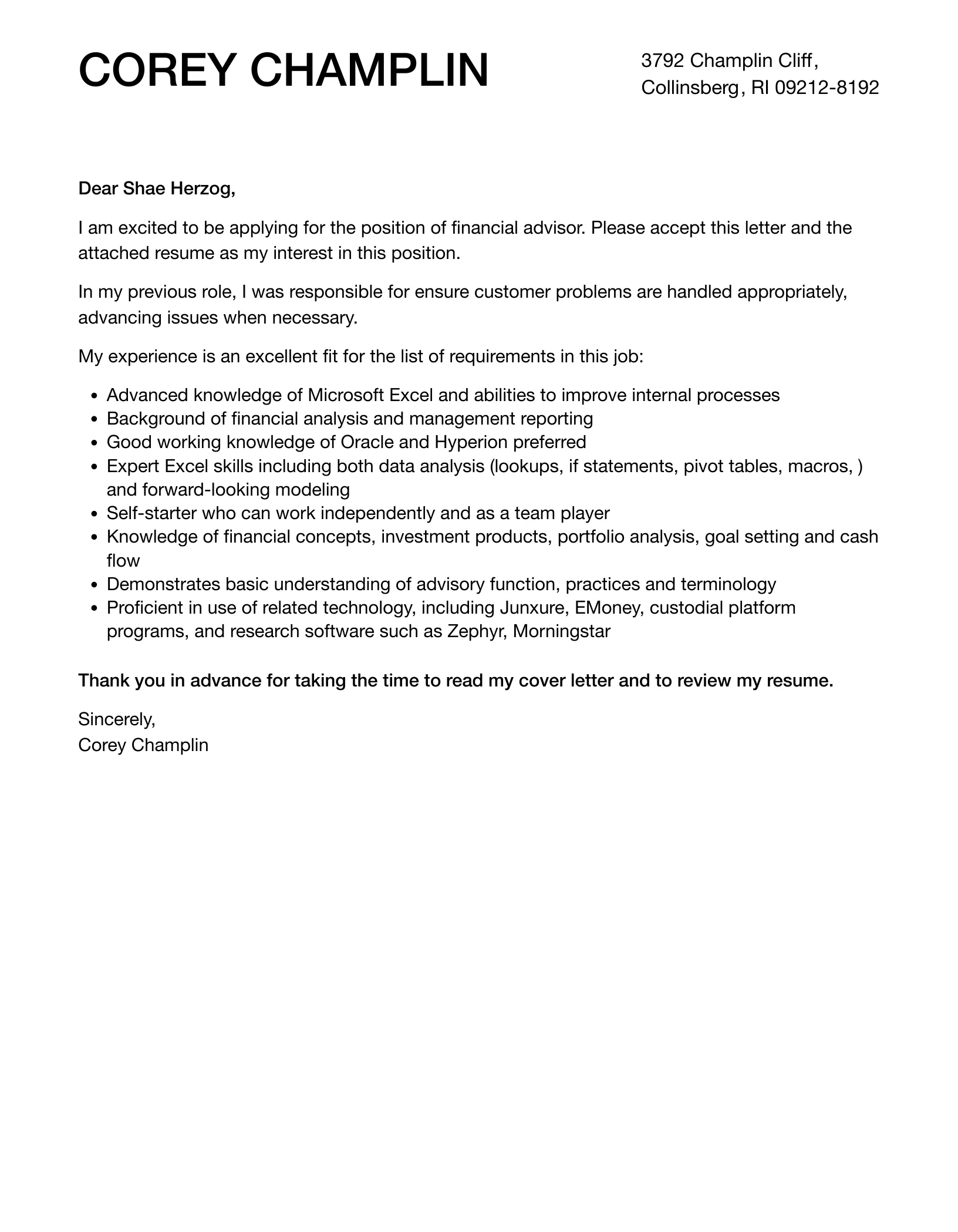
Whenever possible, quantify your achievements with specific numbers and metrics. Instead of saying you increased sales, state the percentage by which you improved sales or the amount of revenue you generated. Use data to illustrate your impact and demonstrate your value. For example, you could mention the number of new clients you acquired, the assets under management you oversaw, or the percentage increase in client satisfaction. Providing concrete examples of your accomplishments makes your cover letter more compelling and shows potential employers the tangible results you have achieved in your career. Quantifiable achievements make your qualifications more persuasive and memorable.
Closing and Call to Action
In the closing paragraph, reiterate your interest in the position and thank the hiring manager for their time and consideration. Express your enthusiasm for the opportunity and your desire to learn more about the role. Include a clear call to action, such as stating that you are available for an interview and providing your contact information. Proofread your letter carefully before submitting it. A well-written and error-free closing paragraph leaves a positive final impression. Use a professional closing, such as “Sincerely” or “Best regards,” followed by your typed name. The call to action should be specific and encourage the hiring manager to take the next step in the hiring process.
Formatting and Design Tips
Font Selection and Readability
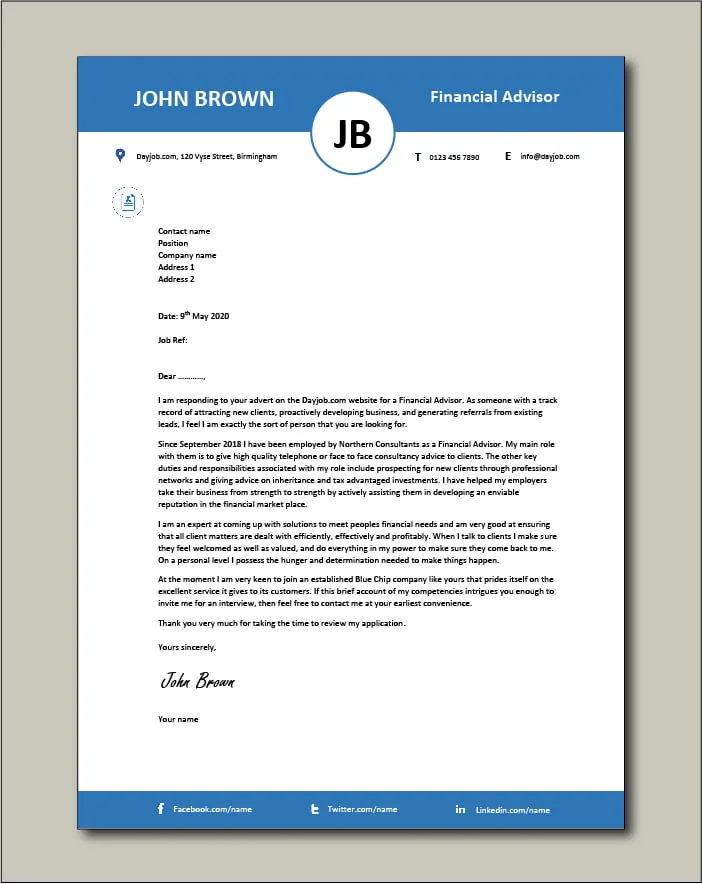
Choose a professional and easy-to-read font, such as Times New Roman, Arial, or Calibri, for your cover letter. The font size should be between 10 and 12 points to ensure readability. Use consistent formatting throughout the document, including the font, font size, and line spacing. Use single or 1.15 line spacing to avoid a cluttered appearance. Ensure the margins are set to a standard width, typically one inch on all sides. Use bolding and italics sparingly to highlight key information, but avoid overusing these formatting options. The goal is to create a clean and well-organized document that is easy for the hiring manager to read and understand. Avoid using overly stylized fonts or distracting design elements.
Proofreading and Editing
Proofreading and editing are crucial steps in ensuring that your cover letter is free of errors. Carefully review your letter for any grammatical errors, typos, or spelling mistakes. Check for correct punctuation and sentence structure. Read your letter aloud to catch any awkward phrasing or areas that need clarification. Ask a friend, family member, or career advisor to review your letter for a second opinion. Fresh eyes can often spot errors that you may have missed. A polished cover letter demonstrates your attention to detail and professionalism. Always spell-check your document. Errors can undermine your credibility and create a negative impression.
Examples of Strong Financial Advisor Cover Letters
Reviewing examples of successful financial advisor cover letters can help you understand how to structure your own. Look for examples that showcase the writer’s skills, experience, and enthusiasm. Pay attention to how they tailor their letter to the specific job requirements and company. You can find examples online or through career resources. Analyze how the writers highlight their achievements, quantify their results, and create a compelling narrative. Use these examples as a guide to create a cover letter that is tailored to your own background and career goals. Remember to adapt the examples to reflect your own experience and personality.
Example 1

This example shows the key elements, including the header, salutation, introduction, body paragraphs highlighting skills and experience, and a strong closing with a call to action. The letter emphasizes the candidate’s financial planning expertise and client relationship skills. The candidate also quantifies their achievements. This example can be used as a reference for your own letter.
Example 2
This is another example of a compelling cover letter. It emphasizes the candidate’s experience in investment management and their ability to build client portfolios. The letter highlights the candidate’s knowledge of market trends and their ability to analyze financial data. Furthermore, it also includes a personalized introduction and a closing that reflects the candidate’s enthusiasm for the role.
Common Mistakes to Avoid
Generic Letters
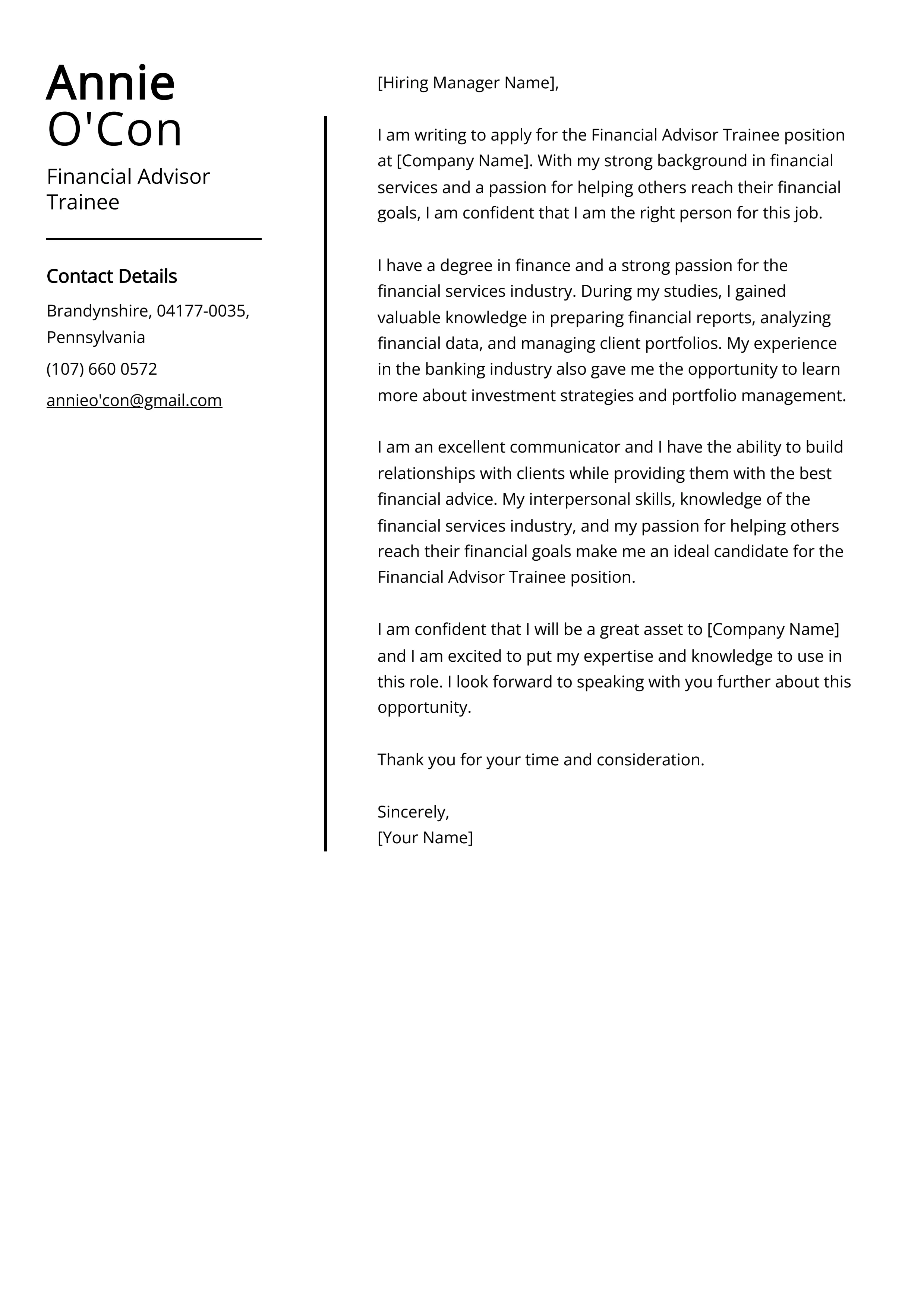
Avoid sending generic cover letters that are not tailored to the specific job or company. Hiring managers can easily identify these letters, and they often end up in the rejection pile. Customizing your letter demonstrates that you have taken the time to research the company and that you are genuinely interested in the position. Use keywords from the job description to show that you understand the role and are a good fit for the position. Customize your letter to reflect your skills and expertise, as well as the company’s specific needs and values. Generic letters can make you look uninterested and unmotivated.
Typos and Grammatical Errors
Typos and grammatical errors can undermine your credibility and create a negative impression. Always proofread your cover letter carefully before submitting it. Use a spell checker and grammar checker, but also read your letter aloud to catch any errors that may be missed by these tools. Ask a friend, family member, or career advisor to review your letter. A polished, error-free cover letter demonstrates your attention to detail and professionalism. Typos and grammatical errors can make it appear you lack attention to detail.
Lacking Enthusiasm
Your cover letter should reflect your enthusiasm for the position and the company. Avoid using a passive or indifferent tone. Use positive and energetic language to showcase your passion for the financial industry and your interest in the opportunity. Clearly express your excitement about the role. Demonstrate your desire to learn more about the company and contribute to its success. Show that you are motivated and eager to make a positive impact. Make sure your enthusiasm shines through your writing to capture the hiring manager’s attention. Without enthusiasm, your letter might not stand out.
Tips for a Successful Application
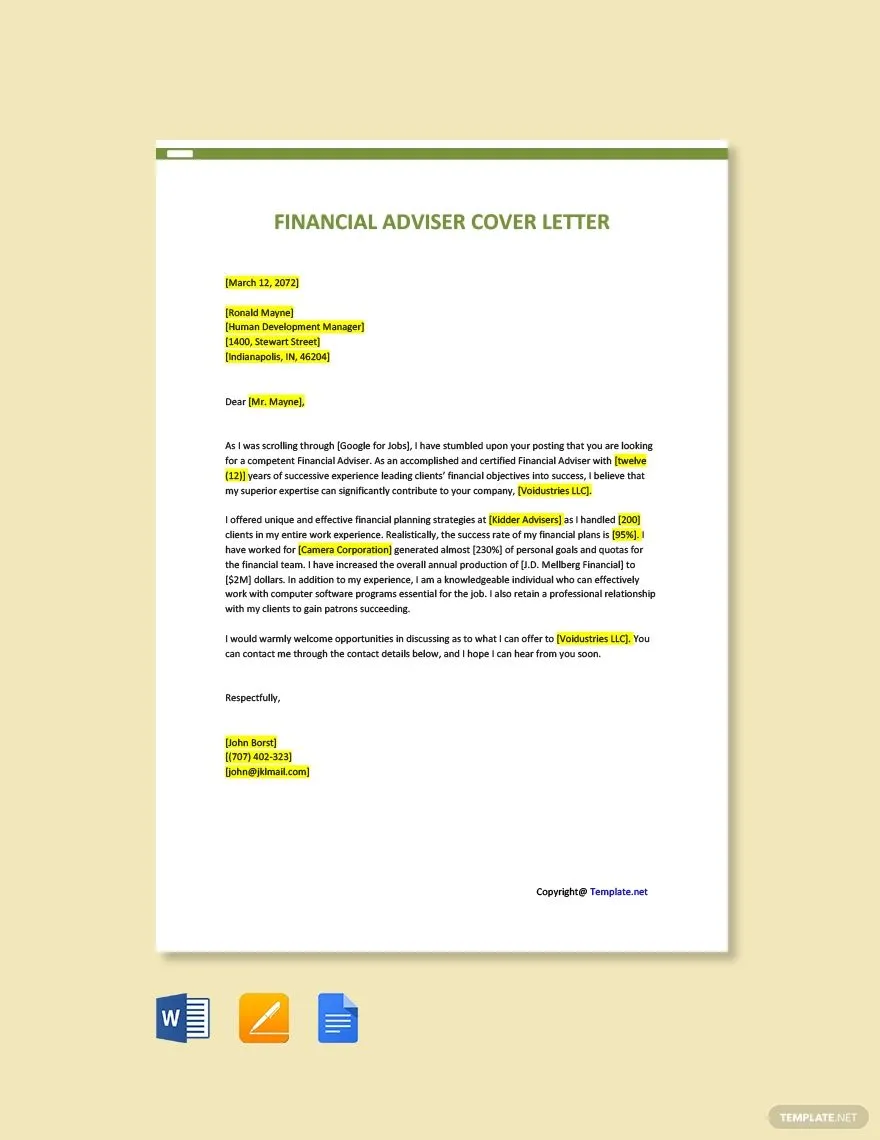
To increase your chances of success, always tailor your cover letter to the specific job and company. Research the company thoroughly and address your letter to the hiring manager by name. Highlight your relevant skills and accomplishments. Quantify your achievements whenever possible. Proofread your letter carefully for any errors. Use a professional and easy-to-read format. Include a clear call to action. Follow up with the hiring manager after submitting your application. These strategies can help you create a strong impression and increase your chances of landing an interview. Remember to emphasize your key skills and qualifications, and showcase your unique value proposition.
